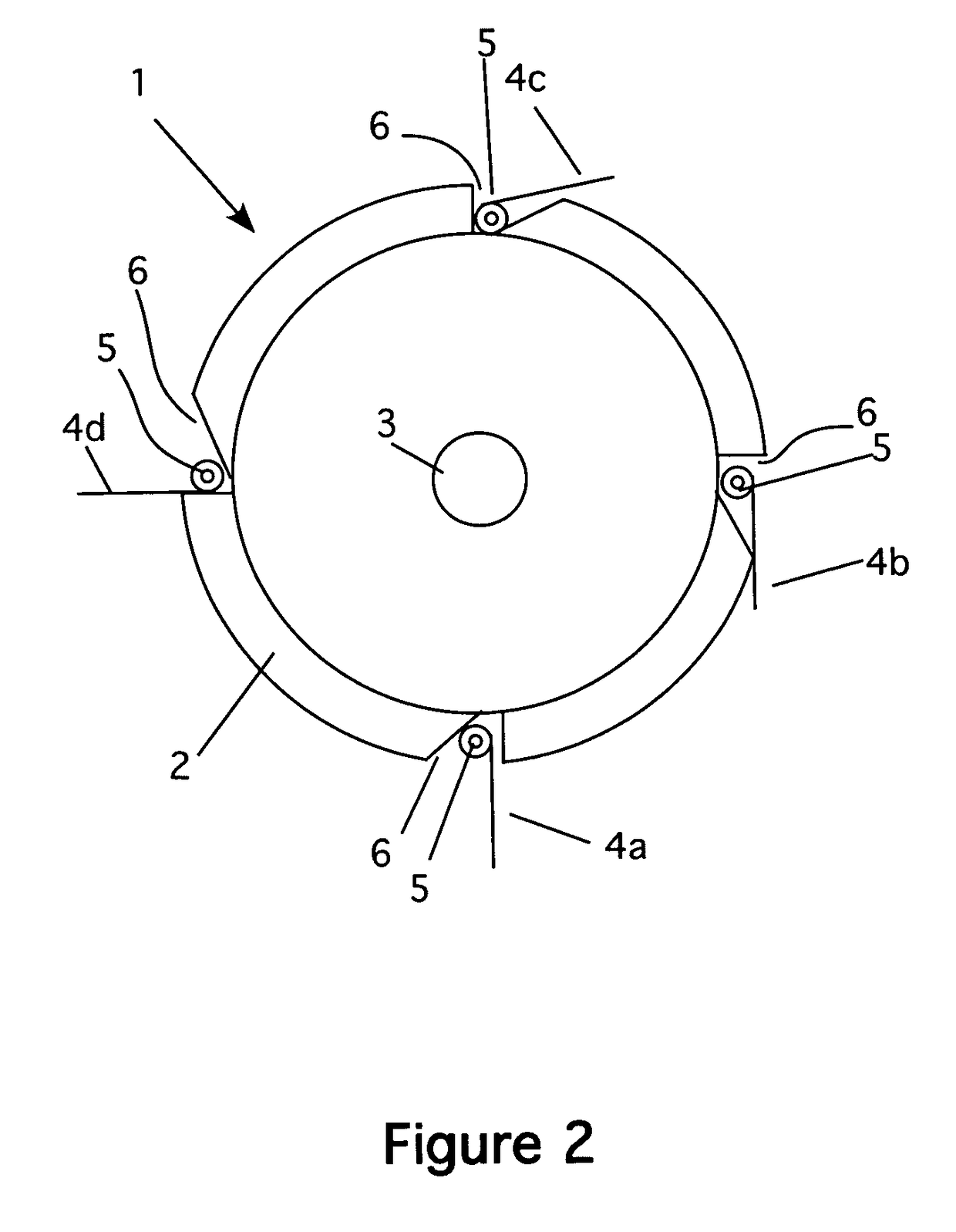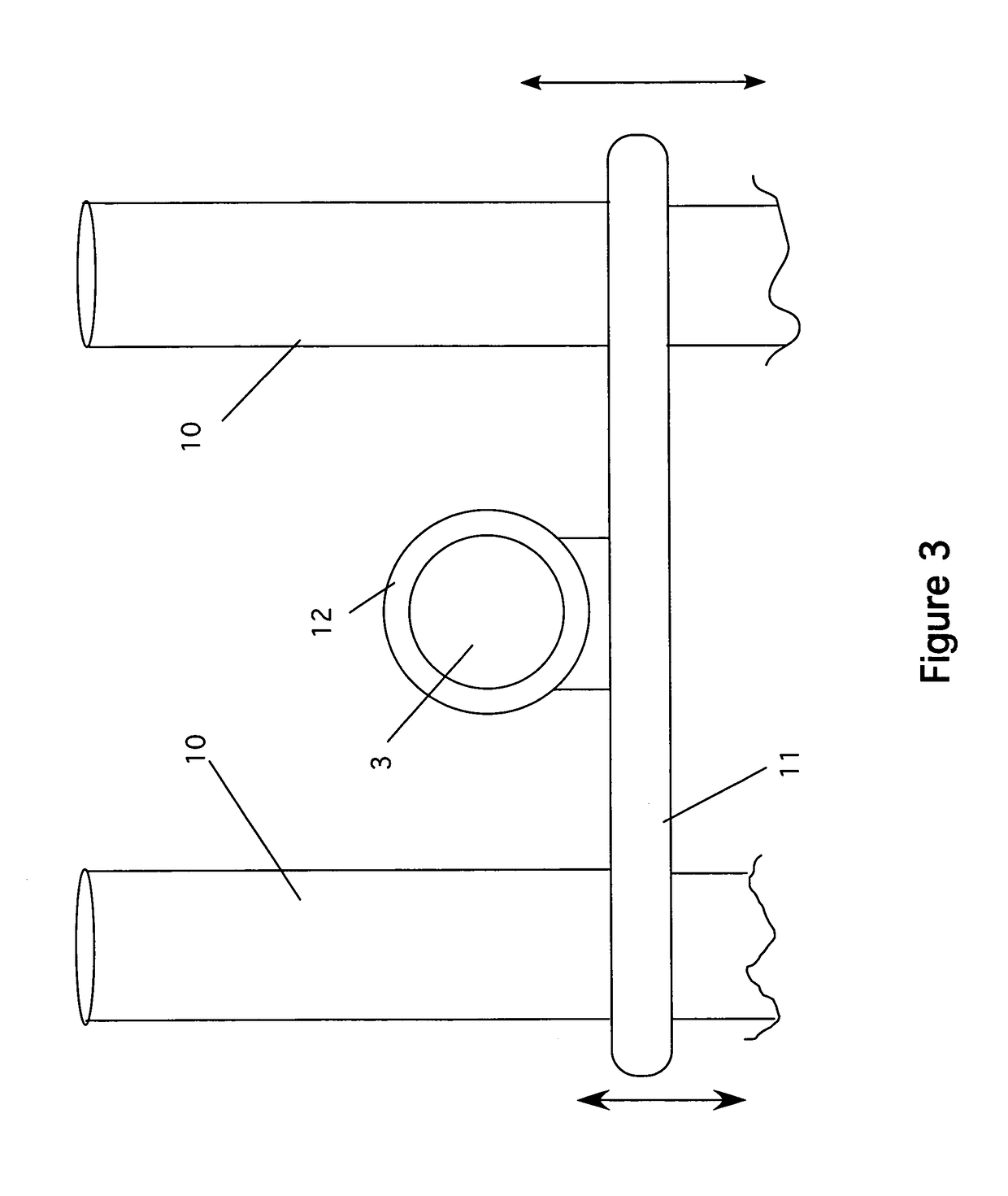Wave-powered water wheel type generator
a generator and wave technology, applied in the direction of electric generator control, rotors, vessel construction, etc., can solve the problems of large number of machines and large maintenance burden, and require considerable surface area
- Summary
- Abstract
- Description
- Claims
- Application Information
AI Technical Summary
Benefits of technology
Problems solved by technology
Method used
Image
Examples
Embodiment Construction
[0016]Referring now to FIG. 1, a perspective view of the device 1 is shown. The device is made of a lightweight cylinder 2 that is made of Styrofoam or a similar lightweight material. In the preferred embodiment, the Styrofoam is covered with a strong plastic cover that protects the core from damage. The cylinder has a shaft 3, which passes through its center and extends from the ends, as shown. About the perimeter of the cylinder 2, are a number of pivoting blades 4 (see also FIG. 2). FIG. 1 shows a six-blade configuration, although the device can have more blades, as is discussed below. As shown if FIG. 1, the blades 4 run the entire length of the cylinder.
[0017]FIG. 2 shows an end view of the device 1 in a four-blade configuration. Note that each blade 4 is attached to the cylinder 2 using a hinge 5. In this way, the blade can move about as shown in the figure. Note also that the cylinder has a receiver notch 6 formed at each blade location. The shape of the notch is designed res...
PUM
 Login to View More
Login to View More Abstract
Description
Claims
Application Information
 Login to View More
Login to View More - R&D
- Intellectual Property
- Life Sciences
- Materials
- Tech Scout
- Unparalleled Data Quality
- Higher Quality Content
- 60% Fewer Hallucinations
Browse by: Latest US Patents, China's latest patents, Technical Efficacy Thesaurus, Application Domain, Technology Topic, Popular Technical Reports.
© 2025 PatSnap. All rights reserved.Legal|Privacy policy|Modern Slavery Act Transparency Statement|Sitemap|About US| Contact US: help@patsnap.com



